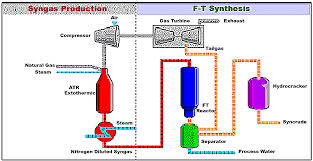
Breaking News
 FDA Chief Says No Solid Evidence Supporting Hepatitis B Vaccine At Birth
FDA Chief Says No Solid Evidence Supporting Hepatitis B Vaccine At Birth
Evergreen, Colorado: Another Killing Zone in America
 Trump Cryptically Writes "Here We Go!" In Reaction To Russia-Poland Drone Incident, Oil Sp
Trump Cryptically Writes "Here We Go!" In Reaction To Russia-Poland Drone Incident, Oil Sp
 Qatar Says It Reserves Right To Retaliate Against 'Barbaric' Netanyahu
Qatar Says It Reserves Right To Retaliate Against 'Barbaric' Netanyahu
Top Tech News
 Methylene chloride (CH2Cl?) and acetone (C?H?O) create a powerful paint remover...
Methylene chloride (CH2Cl?) and acetone (C?H?O) create a powerful paint remover...
 Engineer Builds His Own X-Ray After Hospital Charges Him $69K
Engineer Builds His Own X-Ray After Hospital Charges Him $69K
 Researchers create 2D nanomaterials with up to nine metals for extreme conditions
Researchers create 2D nanomaterials with up to nine metals for extreme conditions
 The Evolution of Electric Motors: From Bulky to Lightweight, Efficient Powerhouses
The Evolution of Electric Motors: From Bulky to Lightweight, Efficient Powerhouses
 3D-Printing 'Glue Gun' Can Repair Bone Fractures During Surgery Filling-in the Gaps Around..
3D-Printing 'Glue Gun' Can Repair Bone Fractures During Surgery Filling-in the Gaps Around..
 Kevlar-like EV battery material dissolves after use to recycle itself
Kevlar-like EV battery material dissolves after use to recycle itself
 Laser connects plane and satellite in breakthrough air-to-space link
Laser connects plane and satellite in breakthrough air-to-space link
 Lucid Motors' World-Leading Electric Powertrain Breakdown with Emad Dlala and Eric Bach
Lucid Motors' World-Leading Electric Powertrain Breakdown with Emad Dlala and Eric Bach
 Murder, UFOs & Antigravity Tech -- What's Really Happening at Huntsville, Alabama's Space Po
Murder, UFOs & Antigravity Tech -- What's Really Happening at Huntsville, Alabama's Space Po
Engineers Create Diesel From Water And Carbon Dioxide That Has Zero-Carbon Footprint

Utilizing the Fischer-Tropsch process, an underutilized technique which has been around since the 1920's, Audi engineers were able to produce a clean-burning diesel fuel. Not only is the fuel carbon neutral, it can be poured directly into current cars of today without modifying the machinery.
The German car manufacturer announced in 2015 that it had successfully created an "e-diesel," or diesel containing ethanol, by using renewable energy to produce a liquid fuel using nothing more than water and carbon dioxide. With fuel prices on the rise once again, the news has gone viral for understandable reasons.
It took just four months for a plant in Dresden operated by clean tech company Sunfire to produce results using the Fischer-Tropsch process. The fuel, named "blue crude," is composed of long-chain hydrocarbon compounds. While it is similar to fossil fuels, it is free from sulfur and aromatics, therefore, burns soot-free.
The engineers' success can be attributed to the high temperatures used. The first step to create this eco-friendly diesel fuel is to harness renewable energy through solar, wind and/or hydropower. Then, engineers heat water to temperatures in excess of 800oC (1472oF). The steam gets broken down into oxygen and hydrogen through high-temperature electrolysis – a process where an electric current is passed through a solution, reports IFLScience. Once hydrogen is removed, it is mixed with carbon monoxide under high heat and pressure. This results in the formation of the hydrocarbon product they're calling "blue crude."

Credit: fostertire.blogspot.com

 Tiny briefcase engine boosts EV range beyond battery power
Tiny briefcase engine boosts EV range beyond battery power 

